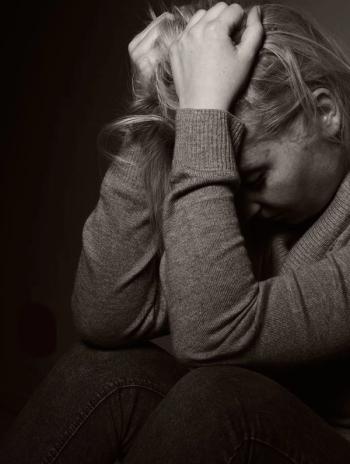
Troubled Sleep Accompanies Cognitive Decline in Women
SAN FRANCISCO -- Poor-quality sleep and cognitive decline appear to go hand-in-hand among older women, but it's unclear which leads to the other, investigators here suggested.
SAN FRANCISCO, July 17 -- Poor-quality sleep and cognitive decline appear to go hand-in-hand among older women, but it's unclear which leads the other, investigators here suggested.
Among more than 2,400 women 65 and older who were followed for more than 15 years, those who had evidence of decline on two validated cognitive tests were significantly more likely to have poor sleep efficiency, longer sleep latency, and more time awake after sleep onset, reported Kristne Yaffe, M.D., of the University of California San Francisco, and colleagues.
Citing dementia's long preclinical period, the authors speculated that that early pathologic changes could independently increase the risk of both cognitive decline and sleep disturbances. "Alternatively," they wrote in the July 17 issue of Neurology, "cognitive decline could be associated with neuropsychiatric disturbances-such as anxiety or depression-that might affect the quality of sleep."
They studied 2,474 women enrolled in a prospective, long-term study osteoporosis study for whom data on sleep and cognitive were available. The women were community-dwelling and had no evidence of dementia either at baseline or during follow-up.
The authors evaluated cognitive function by looking at changes over time in the patients' scores on a modified version of the Mini-Mental State Examination (MMSE), and on the Trail Making Test-Part B (Trails B). Trails B is a timed test measuring attention, sequencing, visual scanning, and executive function.
The investigators defined cognitive decline as a downward change of more than 1.5 standard deviations, equal to a decrease of three or more points, on the MMSE, or as a greater than 1.5 standard deviation above the mean, equal to a more than 92 second delay, in the Trails B. The cognitive tests were evaluated separately.
The patients' sleep quality was measured with actigraphy at the 15-year follow-up visit, with measures include total sleep time in hours, sleep efficiency, sleep latency, napping, and time awake after sleep onset.
The authors used linear regression modeling to control for age, education, depression, walking for exercise, self-reported health status, smoking, history of stroke, use of sleep medications, and baseline cognitive score.
They found that during follow-up, 11% of women had cognitive decline according to the MMSE, and 15% had decline as measured by the Trails B test.
Women with cognitive decline on the MMSE had an adjusted odds ratio for sleep efficiency lower than 70% of 1.71 (95% confidence interval, 1.24 to 2.37).
These women also had a harder time falling asleep, with an adjusted odds ratio for sleep latency of 1.57 (95% CI, 1.12 to 2.21), and had more fragmented sleep, as determined by time awake after sleep onset of 90 minutes or more, with an adjusted odds ratio of 1.43 (95% CI, 1.07 to 1.92).
The results were similar for women who had evidence of cognitive decline on the Trails B test. Additionally, these women had a nearly two-fold likelihood of napping for more than two hours per day (adjusted odds ratio 1.73, 95% CI, 1.28 to 2.33).
The authors also found, however, that cognitive decline on either test was not associated with total sleep time.
"It's been known for some time that people with cognitive problems often have sleep problems, but those studies have mostly been done on severely demented people in nursing homes," said Dr. Yaffe. "Ours was the first study to look at the relationship between sleep and cognition in healthy women dwelling in the community who did not have dementia to begin with."
The investigators have received an NIH grant support the continued tracking of sleep patterns and cognitive health over time in the same cohort.
"Hopefully, we'll be able to tell if cognitive changes lead to sleep disturbances, or if the reverse is true, or if they have a common independent cause," Dr. Yaffe added.
The authors noted that their study was limited by the exclusion of men and of African-American women from the original osteoporosis study (because of low incidence of osteoporotic fracture in these groups). They also noted that the study had a cross-sectional design, with only a single measurement of sleep patterns.
Newsletter
Enhance your clinical practice with the Patient Care newsletter, offering the latest evidence-based guidelines, diagnostic insights, and treatment strategies for primary care physicians.


















































































































































































































































































